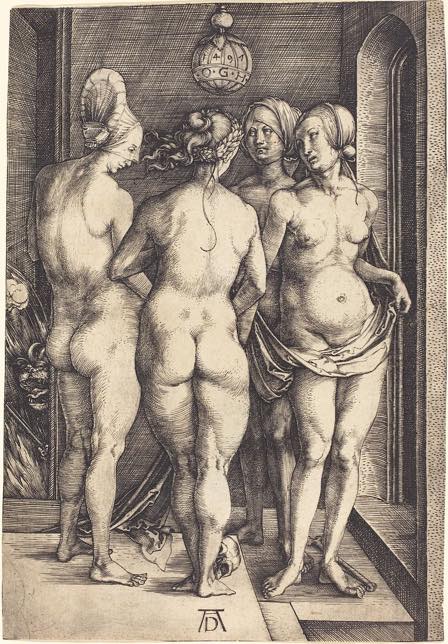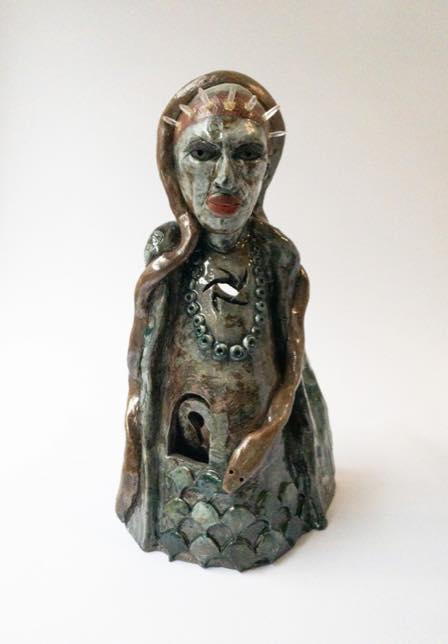Evil Witch Concept Art Classical Evil Witch Concept Art

Artsper is taking a expect at fine art history through the lens of the supernatural. As long as superstition has existed, information technology has appeared in artwork – a testimony to both our fear and curiosity for information technology. Ane of the more thought-provoking areas of this topic is the portrayal of Witch Art.
Witch art sheds light on the ostracization and oppression of women throughout history. Those outcast women unfortunate plenty to be accused of witchcraft have both fascinated and frightened artists. A combination of fright and an age-onetime predilection for the superstitious has birthed incredible imaginative interpretations of the occult. A retrospective expect dorsum at witches in art reveals much about society's tragic treatment of women.
The History Backside Witch Artworks
Full general conjecture almost the nature of witches was that they were individuals who made pacts with the Devil in commutation for supernatural powers. They would use such powers to commit sinful acts. Between the 15th and 17th century, more 90,000 people were formally accused of witchcraft, with half of these executed. In Western Europe, the overwhelming bulk of the accused were women: in England ninety%, and in the Holy Roman Empire and French republic 76%.
But why were women villainized as witches? It is a question widely debated between historians and anthropologists. The full general consensus is that women have been historically considered more susceptible to the Devil's influence. Women had a so-called "disposition for hysteria and jealousy," and a by and large more corruptible nature.

The Rise of the Witch Hunt
We see witch art inside Western art as early as the beginning of the Dark Ages. A prominent and early case is Albrecht Dürer's Dice Vier Hexen, which translates to The 4 Witches. This engraving from 1497 depicts a coven of four nude women. They are accompanied past a small horned demon to the left of the centre, an overt symbol of the Devil. Skulls and basic scattered on the floor may exist a symbol of expiry, magic or invocation from an evil deity.
The idea that this is associated with witchcraft is further inferred from the fact that its production coincides with a highly popular only deeply misogynistic guide to witch hunting. The Malleus Maleficarum ('The Witches Hammer') was released for a third time the year before this engraving was fabricated.

Magic and Hysteria
Another poignant example of witch art is Salvator Rosa's Witches at their Incantations. Created effectually 1646, this painting's creation coincides with the height of the witch mania that was spreading throughout Europe. It depicts haggard one-time naked women, some stooped over cauldrons, and a baby beingness sacrificed to skeletal, devilish monsters. The scene portrays a witches' sabbath, a satanic inversion of a Christian mass. Information technology'due south an illustration of the fear heretics tin can survive undetected within a God-fearing community.
By propagating fear, the Church effectively encouraged the demonization of women who were perhaps outsiders, single and vulnerable. It served as a method to quell anxiety, every bit well as strengthen their own hold over the community. Interestingly, whilst the artist aimed to depict the villainy and wickedness of the witches, in retrospect information technology demonstrates only the cruelty of the European earth of the 17th century. Ironically, the gild which attempts to debase women, cannot see that information technology is the problem itself, creating fear and suffering amongst those they persecute.

A Change in Attitude
We see a shift in this mental attitude towards the end of the 18th century. Francisco de Goya'southward Witches' Sabbath (1798) at first glance seems similar to Rosa and Dürer paintings. It depicts the Devil in the course of a goat surrounded by a coven of witches in a barren landscape. The witches seem to be sacrificing newborns to the devil, with the corpse of an emaciated infant discarded to the left and 1 babe beingness offered upwardly in the forefront of the painting. Goya uses the inverted imagery associated with witchcraft: the caprine animal extends its left rather than right hoof towards the child and the quarter moon faces out of the canvas on the top left corner.
Many art historians, notwithstanding, believe the artist intended to challenge the letters seen in witch art from centuries prior. This is partly due to the number of clichés Goya includes in the painting. This is inferred as criticism of the superstition and paranoia that dominated Spain at the time. Secondly, the painting is a role of the artists Blackness Paintings series, in which the artist expressed his disillusion with the social and political changes happening in Spain at the fourth dimension. Congruent with the chaos caused by the Spanish Inquisition, Goya depicts a bleak vision of humanity.

Contemporary Representations
Movements in subsequently centuries saw efforts from women to repossess the title of witch. An age-onetime term of shame and stigma, feminist artists embraced the idea of witches and the occult. One of the outset to do then was abstract artist and mystic Hilma af Klimt. The Swedish artist was office of a group, called the "The 5," who attempted to contact beings called "The High Masters" through séances. Her abstract paintings, considered to be beginning examples of Western abstruse art, are visual depictions of these spiritual interactions. In 1904 she was instructed by the spirit globe to create a series of works called the Paintings of the Temple. A project that would occupy her for the next 9 years, the series was eventually installed in a spiritualist temple.

Gimmicky artists are carrying on this tradition of reclaiming the term "witch" and its connotations. Liz Ophoven is a Seattle artist who draws inspiration from the spiritual, as well as traditional folklore and myth. She creates statues from clay, inspired by myth and female deities. Kayava and Nesly Richard similarly are inspired by the occult, magic and ancient voodoo traditions. Their piece of work features many pagan-like symbols, tapping into classical depictions of sorcery and witches.

The Development of Witch Art
Information technology is interesting how our relationship with the word "witch" has changed then much, and studying witch fine art throughout art history can assist to unpack the connotations of the change. Undoubtedly this has much to exercise with changing societal relationships with women, as they take fought back against their systematic oppression, attempting to reclaim the term in a positive calorie-free. In plow, the term has become less of a tool of subjugation.
This is particularly true in relation to the lessening influence of establishments such as the Church. Once used to propagate fear in order to further its own political agenda, the Church no longer has such a hold over us as a collective society. Instead in the modern historic period information technology is just a playful and light-hearted term; a costume for a Halloween party or a villain in a children's scary story. But next time you come across a witch in art, remember that she is much more than a extravaganza, and has a long, circuitous history backside her…
Y'all might also like…
Source: https://blog.artsper.com/en/a-closer-look/bewitched-women-as-witches-in-art-history/
0 Response to "Evil Witch Concept Art Classical Evil Witch Concept Art"
إرسال تعليق